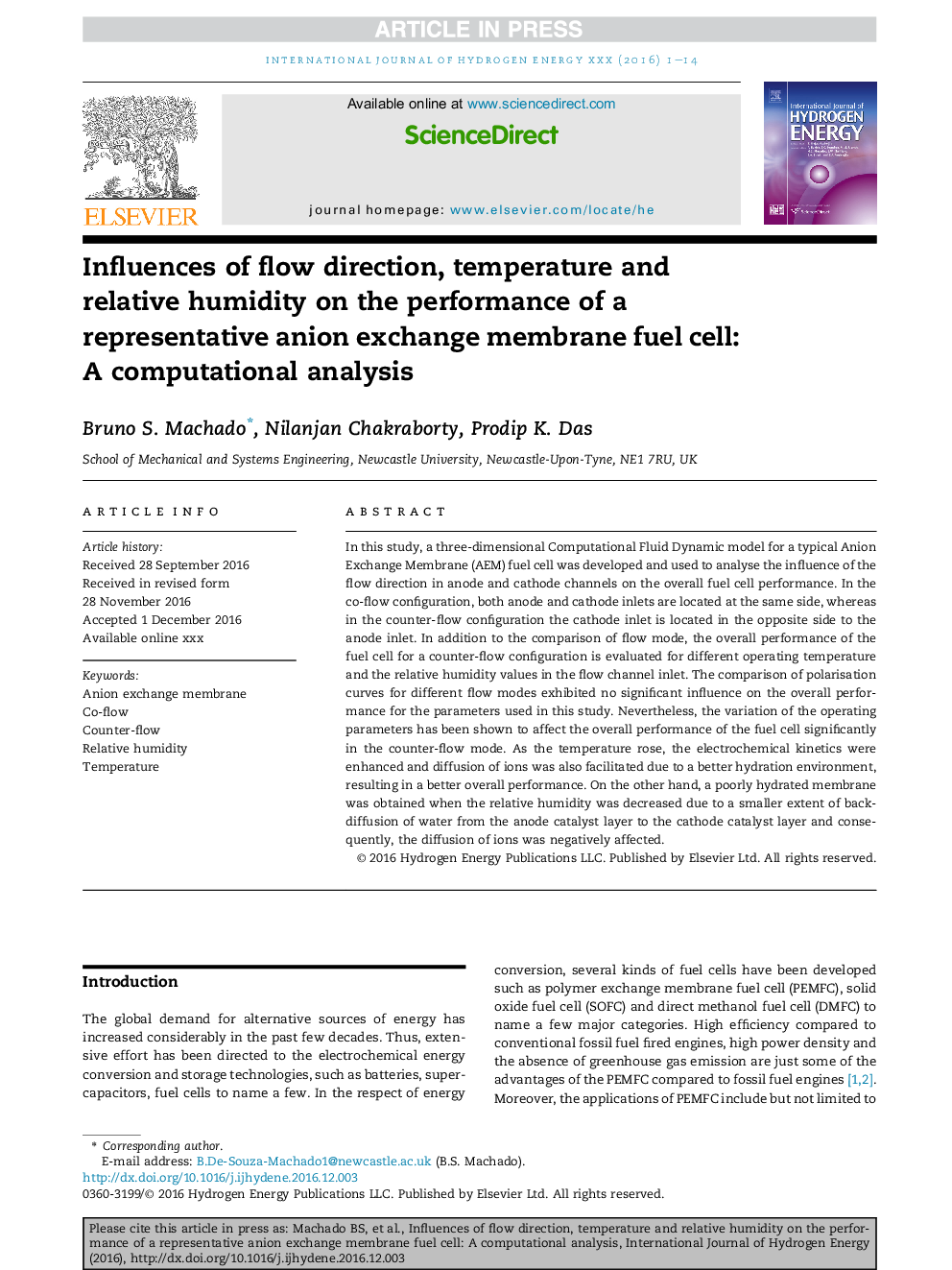| Article ID | Journal | Published Year | Pages | File Type |
|---|---|---|---|---|
| 5146838 | International Journal of Hydrogen Energy | 2017 | 14 Pages |
Abstract
In this study, a three-dimensional Computational Fluid Dynamic model for a typical Anion Exchange Membrane (AEM) fuel cell was developed and used to analyse the influence of the flow direction in anode and cathode channels on the overall fuel cell performance. In the co-flow configuration, both anode and cathode inlets are located at the same side, whereas in the counter-flow configuration the cathode inlet is located in the opposite side to the anode inlet. In addition to the comparison of flow mode, the overall performance of the fuel cell for a counter-flow configuration is evaluated for different operating temperature and the relative humidity values in the flow channel inlet. The comparison of polarisation curves for different flow modes exhibited no significant influence on the overall performance for the parameters used in this study. Nevertheless, the variation of the operating parameters has been shown to affect the overall performance of the fuel cell significantly in the counter-flow mode. As the temperature rose, the electrochemical kinetics were enhanced and diffusion of ions was also facilitated due to a better hydration environment, resulting in a better overall performance. On the other hand, a poorly hydrated membrane was obtained when the relative humidity was decreased due to a smaller extent of back-diffusion of water from the anode catalyst layer to the cathode catalyst layer and consequently, the diffusion of ions was negatively affected.
Related Topics
Physical Sciences and Engineering
Chemistry
Electrochemistry
Authors
Bruno S. Machado, Nilanjan Chakraborty, Prodip K. Das,
